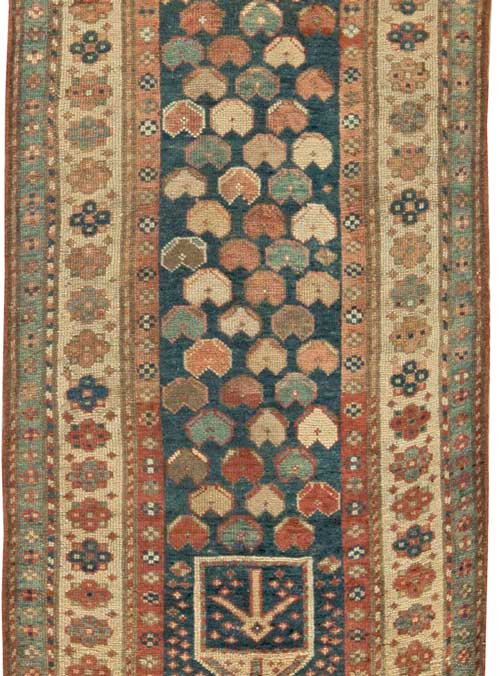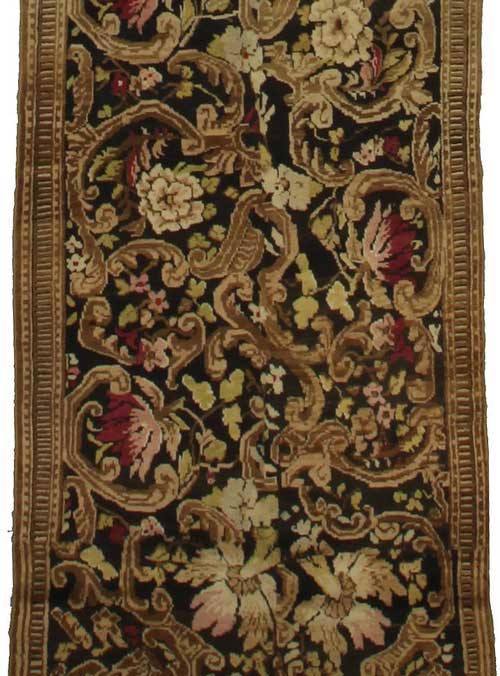Among countries located in Central Asia, Kazakhstan is undoubtedly one of the best known. It’s picturesque landscape, filled with mountains, vast steppes and diverse wildlife attracts the aficionados of photography and trekking, who look for new experiences.
Country’s rich history and ancient traditions are a subject of numerous festivals and cultural events, such as Nauruz, traditional celebration of spring, where locals engage in games and contest characteristic for this regions, all accompanied by music and best of local dishes. However, when it comes to art, general public seems to be unaware of masterpieces offered by country’s artisans, painters and sculptors. Luckily, thanks to those involved in raising awareness of Kazakhstan’s artistic heritage, more and more people take interest in Kazak art, including carpets. Local weaving traditions changed considerably from the ancient times, although it did not affect their exotic beauty. Each year, both traditional artisans and country’s top designers create wonderful pieces inspired by Kazakhstan’s past. Although differences might be slight, they still exist and in this article we would like to compare antique carpets from Kazakhstan and their modern-day counterparts.


Kazak rugs in the past
In the past Oriental rugs from Kazakhstan were considered a luxury, something that belonged in the courts or churches and rarely left the country. Kazak (or Qazax) is a small city in the Northwest of Azerbaijan controlling routes into Armenia and Georgia. Kazak rugs however are mainly woven by the people of Armenia and Afghanistan who are influenced by the Caucasian designs found in old rugs from Russia and the USSR region as well as those found in rugs from the northern parts of the Persian empire. Decorated with silver and golden threads, made using best quality wool and silk bought from Chinese merchants, carpets were a symbol of status that few could afford. Nowadays even the most luxurious Kazak rugs are more accessible and affordable for those in love with their intricate patterns and colors. This is mostly due to commercialization, which allows weavers and artisans to advertise their carpets to the wider audience, while purchasing materials needed to weave morely.
Colors
Traditionally Oriental rugs made in Kazakhstan used a set palette of colors, limited by the availability of plants used to make dyes. Most popular hues were black, white, gray and red, which can be easily seen on antique carpets available in our stock. However, the immigration of Afghan refugees in the 1980’s and 1990’s, due to the cruelty of Taliban regime, had a big impact on weaving industry in Central Asia and influenced the style of weaving in Kazakhstan. Blacks were slowly replaced by blue dyes in various shades, as wider selection of dyes became available for local artisans. On a more negative note, some weavers started to replace traditional vegetable dyes with synthetic ones, mostly due to the increased demand for their goods and the high prices of natural ones, although a great deal of artists still use them.
Materials
Material of which Kazak carpets were made differed depending on for whom it was made. Rich and noble born could purchase pieces made of high quality wool, silk and cotton, while commoners usually used and easily available textiles. Nomadic tribes, who lived in country’s mountainous regions were particularly famous for their beautiful and warm carpets. They were used not only for decoration of tents, but also as furnishings, covers and doors. Contemporary Kazak rugs are also made of natural fibers, but majority of them are imported rather than bought locally, such as wool that is usually brought from New Zealand. Cheaper variations of Kazak carpets usually utilize synthetic materials and as a result are not as desirable by connoisseurs and aficionados. Despite that, Kazak rugs are rarely a subject of counterfeit, compared to more popular variants, such as Persian rugs. However, fake Kazak carpets are not unheard of, so potential buyers should still be cautious about their purchases.
Styles
Traditionally Kazak rugs are flat weaves, made on stationary or portable vertical looms. Shaggy carpets were also made, especially in colder regions or during harsh winters, as their helped to warm the insides of houses and tents up. Authentic Kazak rugs, both antique and modern, are handmade, although nowadays, in the era of industrialization many choose machine made pieces, due to lower manufacturing price and fast production time, as hand weaving one carpet can take a skilled artisans up to a few months of intensive work.
Patterns
When it comes to motifs, Kazak rugs tend to be diverse. In the past weavers preferred geometrical patterns with an astonishing levels of symmetry. Antique Kazak rugs featured decorative medallions, mostly of the Sevan and Karachopf types. rich in colors and detail, rosettes and various geometric figures, among many others. Those woven by nomadic artisans usually also contained simplistic depictions of animals and plants, which had a specific meaning, depending on a tribe. Overall the designs were bold and extremely decorative, in order to suit the tastes of the general public. It was not uncommon to use metal threads in order to make them more durable and pleasant to look at. Modern weavers sometimes try to mimic masters of all, although thanks to more precise looms and other technological improvements, nowadays they are able to create more intricate designs. As a result, we can see traditionally-inspired carpets that befit a king with their rich patterns, but there is no shortage of weavers, who decide to pick more simplistic approach to their craft and create modern compositions with traditional elements.
Although they are not as popular as esteemed Persian rugs, Kazak rugs gain more and more fame every day, as public notices their rare beauty and original designs. Modern Central Asian designers draw a lot of inspiration for their project from the traditional art, helping historians and artisans to keep it from being forgotten amongst designs from other countries of the world. There is a hope that in the future, Kazak rugs will find their way into the hearts of not only connoisseurs, but also common people.